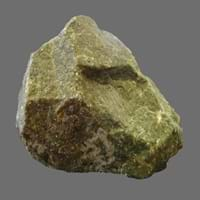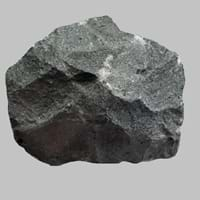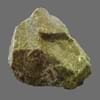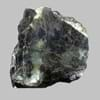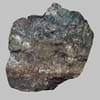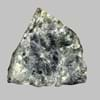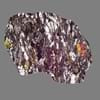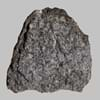Definition
Dunite is a green to brownish coarse-grained igneous rock mainly consisting of olivine
Latite is an igneous, volcanic rock, with aphanitic-aphyric to aphyric-porphyritic texture
Discoverer
Ferdinand von Hochstetter
Unknown
Etymology
From the name of Dun Mountain, New Zealand, + -ite1
From the Latin word latium
Class
Igneous Rocks
Igneous Rocks
Sub-Class
Durable Rock, Medium Hardness Rock
Durable Rock, Medium Hardness Rock
Other Categories
Coarse Grained Rock, Opaque Rock
Fine Grained Rock, Opaque Rock
Texture
Phaneritic
Aphanitic to Porphyritic
Color
Dark Greenish - Grey
Black, Brown, Colourless, Green, Grey, Pink, White
Durability
Durable
Durable
Scratch Resistant
Yes
Yes
Appearance
Rough and Shiny
Rough
Interior Uses
Decorative Aggregates, Interior Decoration
Decorative Aggregates, Entryways, Interior Decoration
Exterior Uses
As Building Stone, As Facing Stone, Garden Decoration, Paving Stone
As Building Stone, As Facing Stone, Garden Decoration, Office Buildings
Other Architectural Uses
Curbing
Curbing
Construction Industry
As Dimension Stone, Cement Manufacture, Construction Aggregate, for Road Aggregate, Making natural cement, Raw material for the manufacture of mortar
As a Flux in the Production of Steel and Pig Iron, As a Sintering Agent in Steel Industry to process Iron Ore, As Dimension Stone, Cement Manufacture, for Road Aggregate, Making natural cement, Manufacture of Magnesium and Dolomite Refractories
Medical Industry
Not Yet Used
Not Yet Used
Antiquity Uses
Artifacts, Monuments, Sculpture, Small Figurines
Artifacts, Monuments, Sculpture
Commercial Uses
Creating Artwork, Gemstone, Jewelry, Source of Chromite, Platinum, Nickel and Garnet, Source of Diamonds
An Oil and Gas Reservoir, As a Feed Additive for Livestock, Metallurgical Flux, Soil Conditioner, Source of Magnesia (MgO)
Types
Not Available
Rhomb porphyries
Features
Constitutes upper part of the Earth's mantle, Generally rough to touch, Host rock for Diamond, Is one of the oldest rock
Host Rock for Lead
Archaeological Significance
Famous Monuments
Data Not Available
Data Not Available
Famous Sculptures
Data Not Available
Data Not Available
Formation
Dunite is a plutonic ultramafic igneous rock consisting almost m olivine. It can be formed in two ways.
Latite is a fine-grained, hard rock which is a type of metasomatite, essentially altered basalt. It forms with or without crystallization, either below the surface as intrusive rocks or on the surface as extrusive rocks.
Mineral Content
Amphibole, Chromite, Garnet, Magnesium, Olivine, Phlogopite, Plagioclase, Pyroxene
Alkali feldspar, Biotite, Plagioclase, Pyroxene
Compound Content
Ca, CaO, Fe, Potassium, Silicon Dioxide, Sodium, Titanium Dioxide
CaO, Cl, MgO
Types of Metamorphism
Burial Metamorphism, Cataclastic Metamorphism, Contact Metamorphism
Burial Metamorphism, Cataclastic Metamorphism
Types of Weathering
Biological Weathering, Chemical Weathering, Mechanical Weathering
Biological Weathering, Chemical Weathering, Mechanical Weathering
Types of Erosion
Coastal Erosion, Glacier Erosion, Water Erosion
Chemical Erosion, Water Erosion, Wind Erosion
Grain Size
Coarse Grained
Fine Grained
Fracture
Irregular
Conchoidal
Porosity
Less Porous
Very Less Porous
Luster
Shiny
Subvitreous to Dull
Cleavage
Imperfect
Perfect
Specific Gravity
3-3.01
2.86
Transparency
Translucent to Opaque
Translucent
Density
2.84-2.85 g/cm3
2.8-2.9 g/cm3
Resistance
Heat Resistant, Pressure Resistant, Wear Resistant
Heat Resistant, Pressure Resistant
Deposits in Eastern Continents
Asia
China, India, Indonesia, Kazakhstan, Russia, South Korea, Thailand, Turkey
Not Yet Found
Africa
Morocco, South Africa
Not Yet Found
Europe
Finland, France, Georgia, Germany, Great Britain, Italy, Kazakhstan, Netherlands, Norway, Spain, Switzerland, Venezuela
Bulgaria
Others
Not Yet Found
Not Yet Found
Deposits in Western Continents
North America
Canada, USA
USA
South America
Argentina, Brazil, Colombia, Ecuador, Venezuela
Not Yet Found
Deposits in Oceania Continent
Australia
New Zealand, Western Australia
Not Yet Found
All about Dunite and Latite Properties
Know all about Dunite and Latite properties here. All properties of rocks are important as they define the type of rock and its application. Dunite and Latite belong to Igneous Rocks.Texture of Dunite is Phaneritic whereas that of Latite is Aphanitic to Porphyritic. Dunite appears Rough and Shiny and Latite appears Rough. The luster of Dunite is shiny while that of Latite is subvitreous to dull. Dunite is available in dark greenish - grey colors whereas Latite is available in black, brown, colourless, green, grey, pink, white colors. The commercial uses of Dunite are creating artwork, gemstone, jewelry, source of chromite, platinum, nickel and garnet, source of diamonds and that of Latite are an oil and gas reservoir, as a feed additive for livestock, metallurgical flux, soil conditioner, source of magnesia (mgo).
